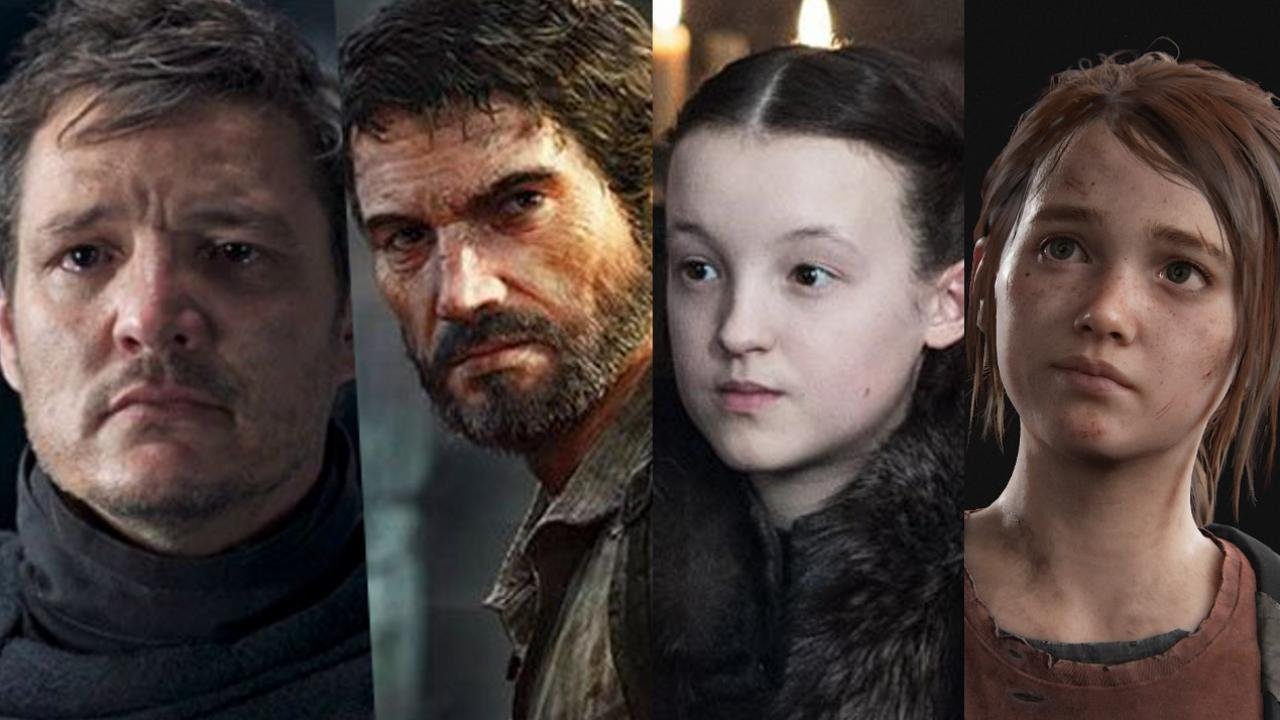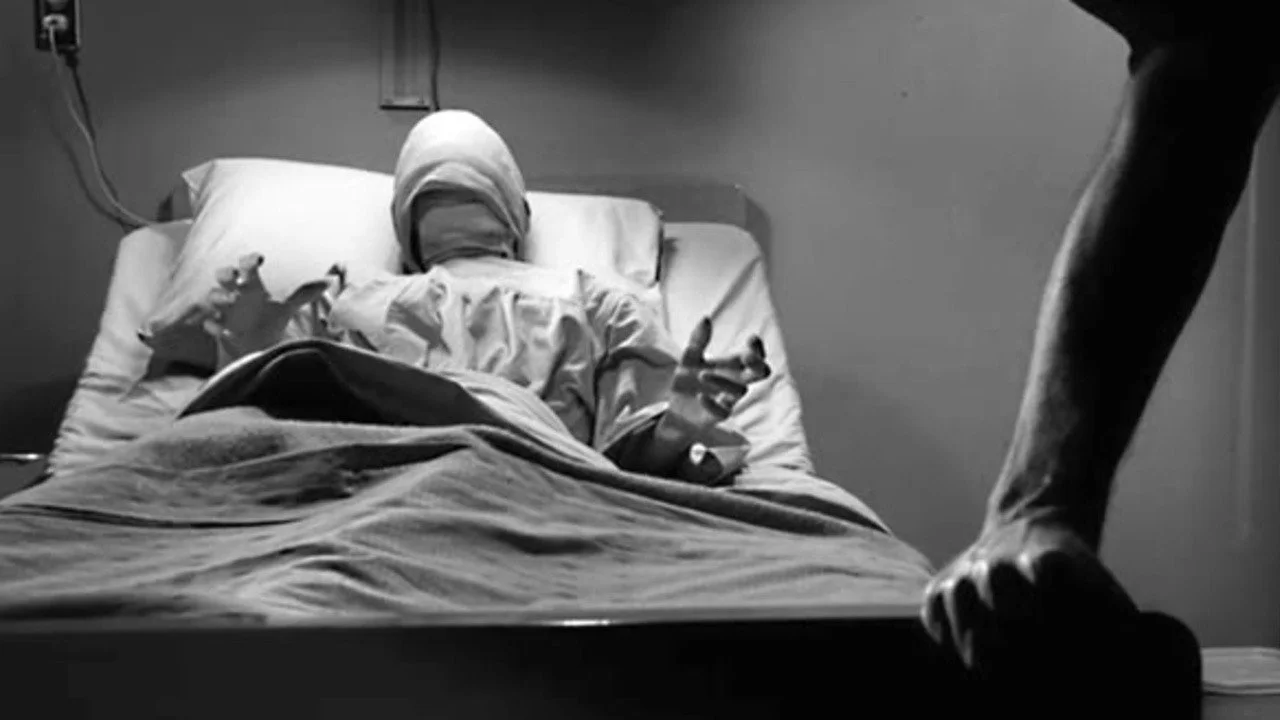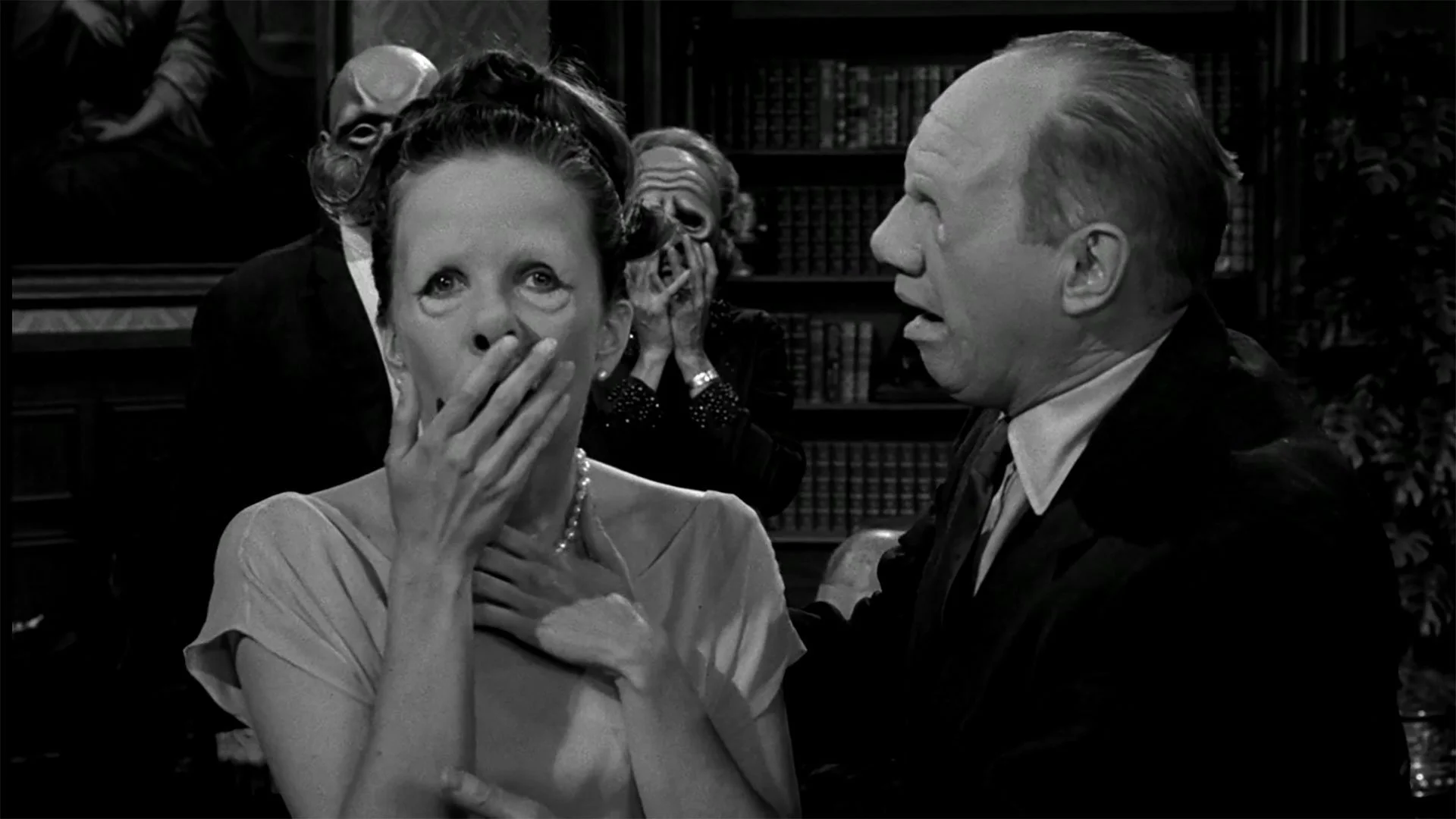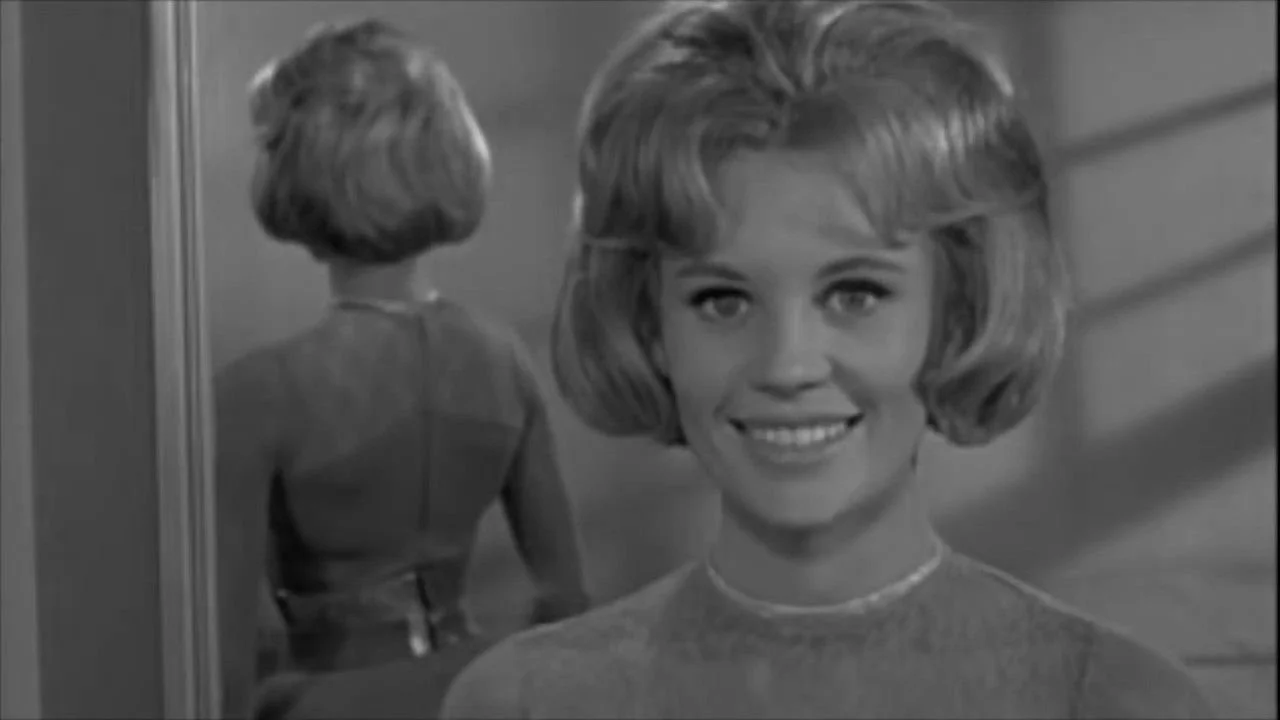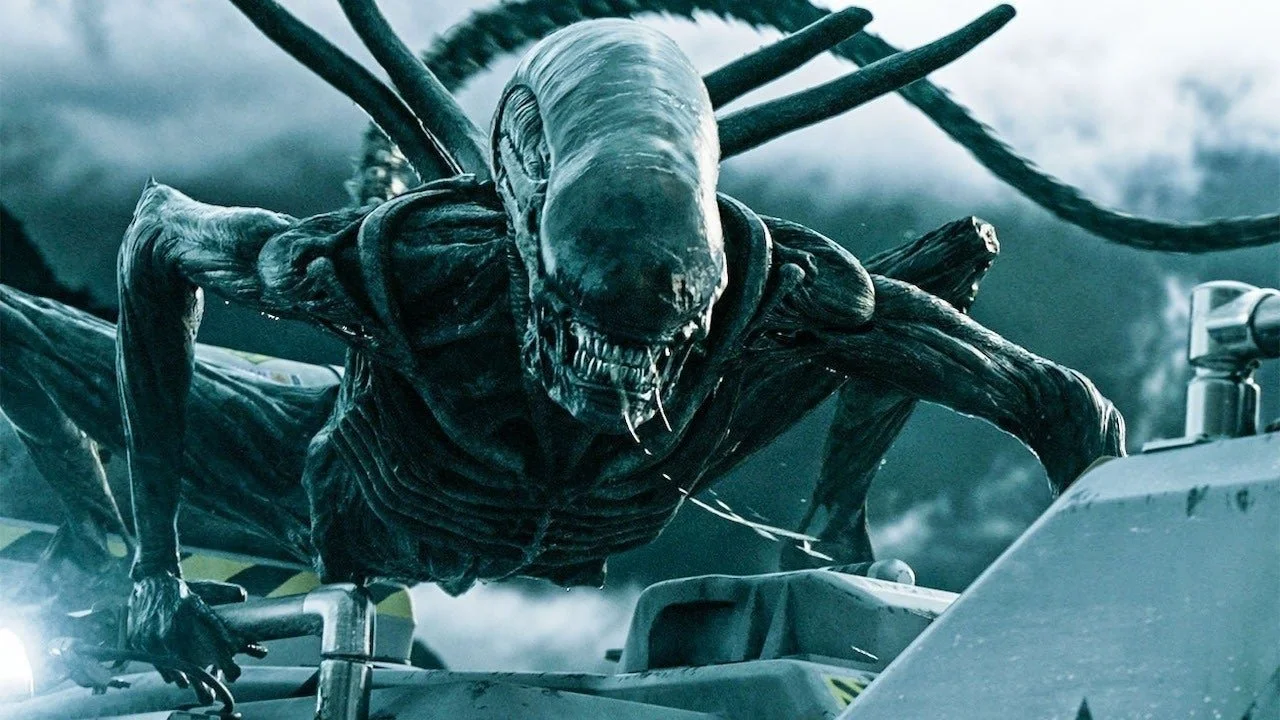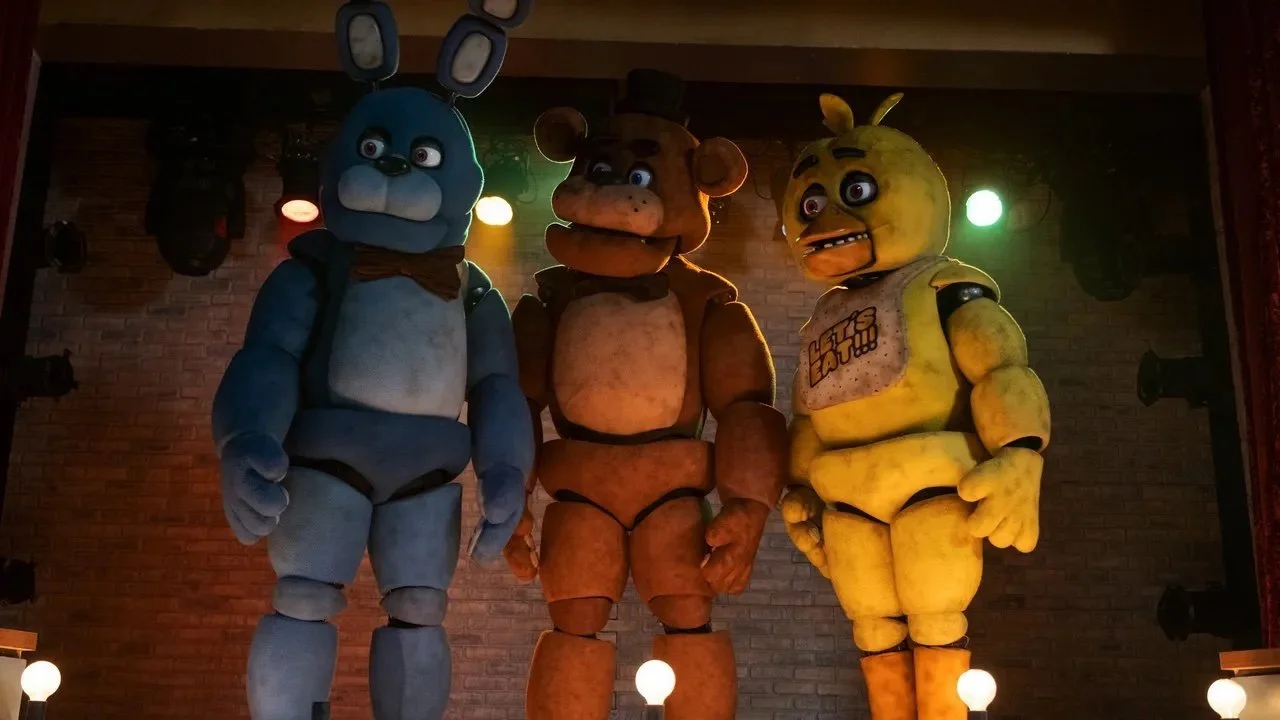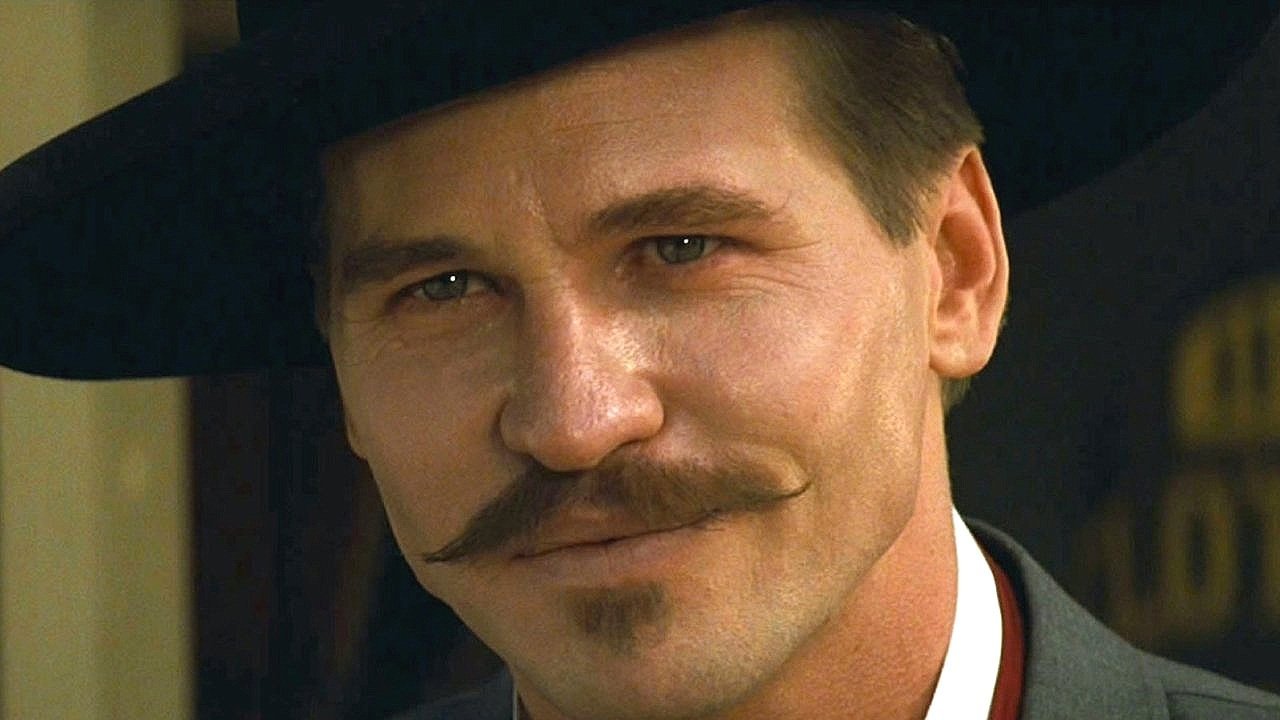9 Essential Episodes Of ‘The Twilight Zone’
Image Source: thenetline.com
Once viewers were aware they were entering a “dimension not only of sight and sound but of mind” and “wondrous land whose boundaries are that of imagination”, from 1959 to 1964, viewers entered a world known only as The Twilight Zone. Though rebooted by Jordan Peele in 2019, it can be said that the original rings true and the classic episodes have cemented themselves in pop culture.
Which episodes have created a more lasting impression on viewers and television history? Let’s jump into this Twilight Zone saga. Before diving too deep, spoilers lay ahead.
RELATED:
9. The Eye of the Beholder
Image Source: mubi.com
Considered to be a “masterclass in writing but also direction”, season two episode six of The Twilight Zone has one of the most iconic endings in the show’s history. Throughout much of the episode, no faces are shown. The focus of the episode is a woman named Janet whose deformed face is wrapped in bandages. She states to a doctor how she “sometimes thinks she lived her life in a dark cave of gauze”. With a desire to fit into normal society, the woman hears doctors tell her her condition cannot be fixed with plastic surgery.
As the episode progresses, viewers watch as just like Janet, we do not see the doctors and medical personnel until the final moments. Once the gauze (and shadows) are lifted, Janet is revealed. Rather than being confronted with the "pitiful twisted lump of flesh", audiences see a conventionally attractive woman while the doctors and nurses are the “norm” in their society with drooping features, large, thick brows, sunken-in eyes, swollen and twisted lips, and wrinkled noses like pigs' snouts. Janet’s only solace is being exiled to a village of “her own kind” as her current society cannot legally perform any more procedures to make Janet conform to their ideas of normal and attractive.
8. The Hitchhiker
Image Source: birb.uk
One of the most named and remembered episodes in The Twilight Zone repertoire, “The Hitchhiker” is a masterclass in making the audience question their sanity. According to The View From the Junkyard, the episode’s “eerie and yet relatable” with “a whopper of a punchline”. Driving alone can make one feel unsettled, but when you are the lonely one who sees a strange man hitch-hiking along the same road you’re traveling on and he so happens to be everywhere you look, it’s almost natural to feel uneasy. Then, comes a twist.
Central character Nan tries to kill the hitchhiker to quell her growing fear of him, only to fail and call her mother to tell her that she has become stranded during her road trip. Only the woman who answers the call gives Nan and the audience a chilling realization: the accident Nan was a part of at the beginning of the episode was fatal. The life it claimed was Nan and the hitchhiker she had been trying to avoid was the “personification of death” waiting for Nan to accept her fate. An M. Night Shyamalan twist before M. Night Shyamalan.
7. It's A Good Life
Image Source: YouTube
It’s a question of nature versus nurture. Are children born innocent only to be corrupted or are already corrupted? “It’s a Good Life” focuses on Anthony Fremont, a child with no empathy and supernatural abilities who has his town under his thumb. Adults must remain in high spirits around Anthony or face banishment into a place only known as The Cornfield or be turned into Jack in the Boxes. Any laughter and smiles are tense ones.
Having faced no form of repercussion for his actions, Anthony has no way of knowing his actions are wrong. In fact, one of Anthony’s final acts of defiance is to create a snowfall that causes crops to die and the townspeople to starve. His father tries to discipline him, only to bend to the peer pressure of the other adults and praise Anthony for the snow as “it's good that [Anthony] is making it snow…it's real good.... tomorrow’s gonna be a real good day!”
An episode with an end such as this caused Time magazine to name this the third-best Twilight Zone episode, behind "Time Enough at Last" and "The Monsters Are Due on Maple Street".
6. The Living Doll
Image Source: YouTube
Before there was Chucky, Annabelle, and M3GAN, there was Talking Tina. Leave it to The Twilight Zone to turn a staple childhood toy into something to be feared. However, the fear is not over Talking Tina. Even though the new stepfather, Eric, in the episode is “comically hot-tempered and cruel in how a man from the ’60s could only be”, it’s later revealed the man is what is meant to be feared. The little girl’s declaration of her doll being alive comes across as innocent, but the doll is alive and it’s alive with a purpose: to protect Kristy and her mother from Eric.
Eric, who verbally abuses Kristy and seemingly does little to bond with her as he is unable to have children, turns his anger and attention to Talking Tina. His attempts to get rid of the doll are futile, and her threats to make sure Eric “will be sorry” are fulfilled as she causes his death. Suddenly, the veil of being just a doll is dropped as Kristy’s mother realizes Eric’s claims of the doll being alive are true. Now she “has to be nice to [Talking Tina]” or face the consequences. Whether the doll manifests Kristy’s hatred toward her stepfather or if Talking Tina was possessed is up for debate.
5. The Masks
Image Source: imdb.com
Described as “one of the most eerie tales of inner ugliness”, the premise of the episode seems simple enough—a spoiled family waiting for the patriarch to die so they can receive their inheritance. As the man lies dying, he is brutal and honest with his family; calling them hopeless money grabbers who intend to take everything he’s worked so hard for. Strangely enough, he writes no one from his family out of the will. The catch? He orders them to wear horrifyingly ugly masks as his dying wish. Begrudgingly, they do in exchange for their inheritance, unaware of the price they will pay.
Unbeknownst to the rest of the family, the masks are cursed. When the children have had enough of wearing the masks, they are confronted with the horrors of their father’s final act of revenge. In exchange for money, the man’s wife and children are cursed with the same faces bestowed upon them by the masks. The episode concludes with the family wearing “the faces of all that was inside them—and they'll wear them for the rest of their lives, sad lives now to be spent in shadow.”
4. Number 12 Looks Just Like You
Image Source: pinterest.com
This classic Twilight Zone episode loosely based on Charles Beaumont’s short story “The Beautiful People”, “Number 12 Looks Just Like You” is often overshadowed by “Eye of the Beholder” as they hold similar themes trying to modify appearances for the sake of fitting into normal society. The main difference is the central character, Marilyn, refuses to undergo a ritual surgery that would transform her into one of the standard models advertised. Specifically, Number 12, the one her mother Lana and their maid bear resemblance toward.
Much to the confusion and chagrin of Lana, Marilyn had no interest in conforming to “the transformation” her society pushes on girls upon their nineteenth birthdays. Narrator Rod Serling relates, “Given the chance, what young girl wouldn't happily exchange a plain face for a lovely one? What girl could refuse the opportunity to be beautiful?”
Marilyn’s refusal to conform and desire for a deeper meaning in life get her labeled as “radical” and sent to a hospital. Seeing how no one understands and empathizes with her, Marilyn attempts to escape only to be caught and forcibly Transformed into Number 12. Suddenly, her disposition and health are “improved” according to her doctor.
3. The Monsters Are Due On Maple Street
Image Source: Paramount Plus
A once serene and peaceful day on the titular street takes a turn for the sinister when the town is shrouded in darkness after a flashing light appears in the sky. Suddenly, the electricity doesn’t work, and other items such as cars, lawnmowers, phones, and radios no longer function. As a result, tensions run high, and the seeds of distrust and fear are planted.
The story of paranoia causing friends to turn on one another is something very much rooted and seen in history. Consciences and the attempt to appeal to logic and feelings are turned on deaf ears as Maple Street residents believe fellow resident Les Goodman to be an alien and subject him to their witch-hunt. As a result, their fears and hysteria cause the death of another neighbor, the destruction of their neighborhood, and the satisfaction of aliens (who caused the lights to flash and affected the electricity) that all it takes is a simple change to make people turn against one another.
2. Nightmare At 20,000 Feet
Image Source: YouTube.com
“There’s a man out there!” claims former mental health patient Robert during his flight home. Given his history, those around him are skeptical. Soon, Robert questions his sanity. Even he admits how odd it is for the gremlin to avoid everyone else's attention, but not his. Suddenly his skepticism turns to concern when the gremlin starts to tamper with the wiring on the wing. However, the fear of his life along with his wife and the others aboard falls on deaf ears. This breakdown results in Robert being carried off in a straitjacket.
In a cruel twist of fate, the damage the gremlin had done on the wing of the plane (as well as the gremlin) was not a figment of Robert’s mind. The whereabouts of the gremlin are unknown.
1. Time Enough At Last
Image Source: Entertainment Earth
According to TV Insider, “Time Enough At Last” has made its lasting mark in pop culture partially due to its ending which was famously parodied on Family Guy (you know, the one with the final brain cell breaking his glasses and proclaiming “it’s not fair. There was time, now!”). Though many consider themselves bookworms, they wouldn’t be able to hold a candle to the central character Henry Bemis. Desiring the time to devote to reading without interruptions or someone destroying his books, he unexpectedly gets his moment.
Miraculously saved by being in a bank vault when a bomb wiped away human existence, the only thing that makes Henry feel joy is the fact that the town library still has its books inside. A wish come true for Henry; no one to nag him, occupy his time, no obligations to get in the way of reading all the books in the world. Until his thick glasses break, leaving him near blind. And truly alone.
Sometimes the world is stranger than fiction, or closer to fiction than we realize. The line between truth and imagination may be closer than we think, and this thought was questioned time and time again in The Twilight Zone. What is real? What has the possibility to become real? If we give something power, does it truly become powerful? The Twilight Zone clearly has such a stronghold in pop culture when fiction has the potential to become our reality and vice versa. What remains is how far down will the rabbit hole go.
READ NEXT:
Source(s): Junkyard.blog, TV Insider, Rolling Stone, YouTube


